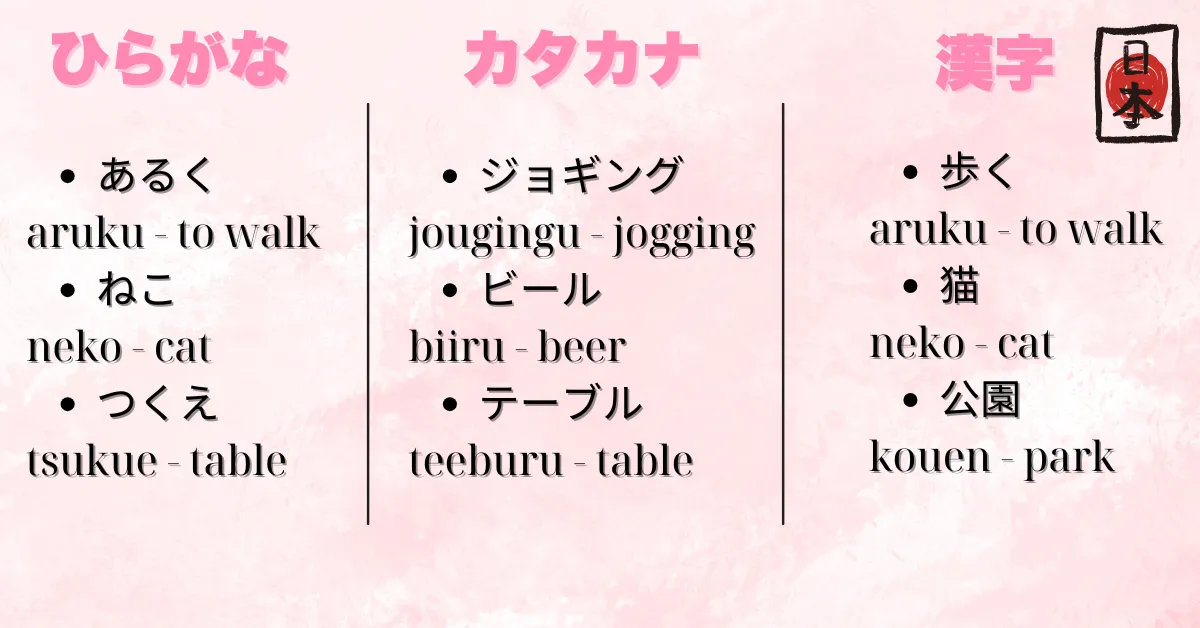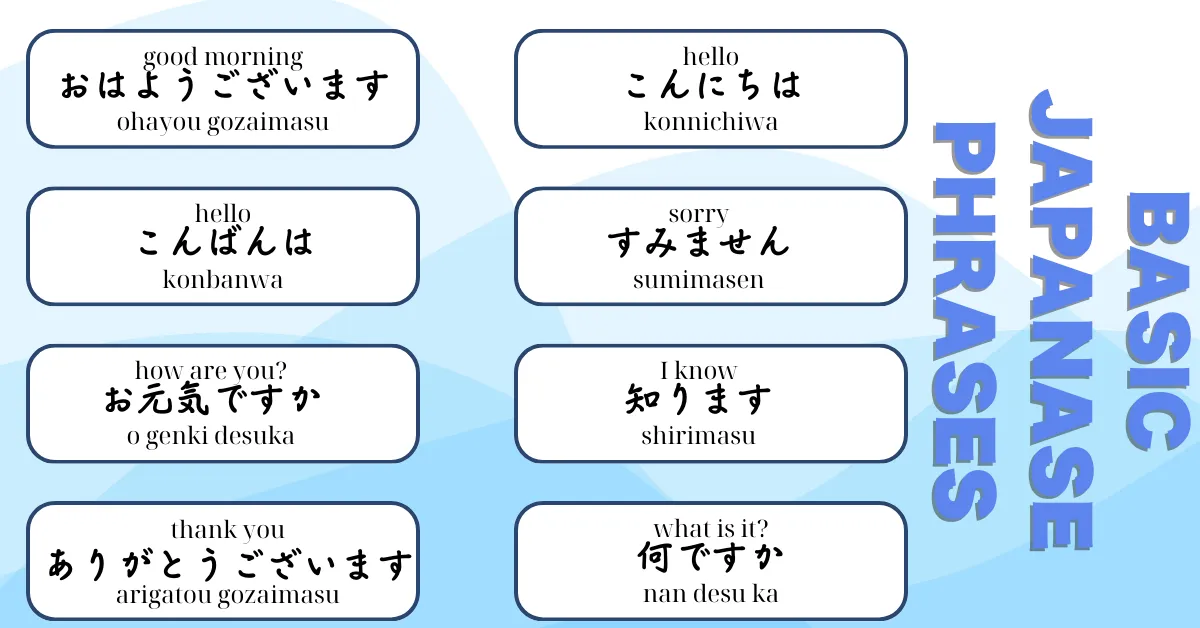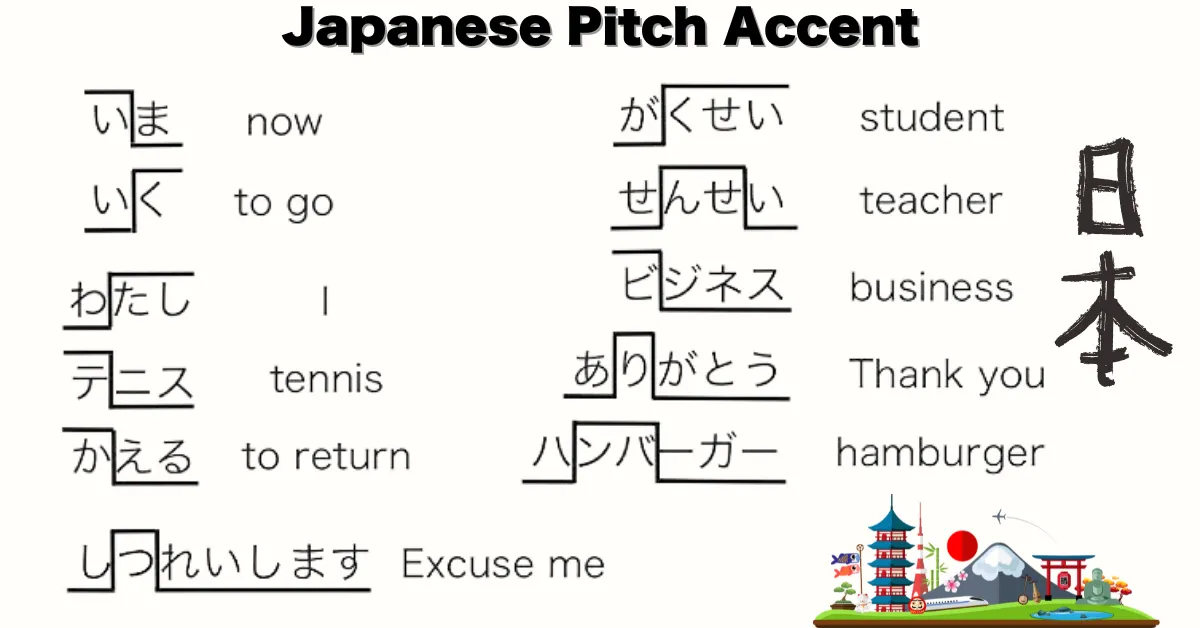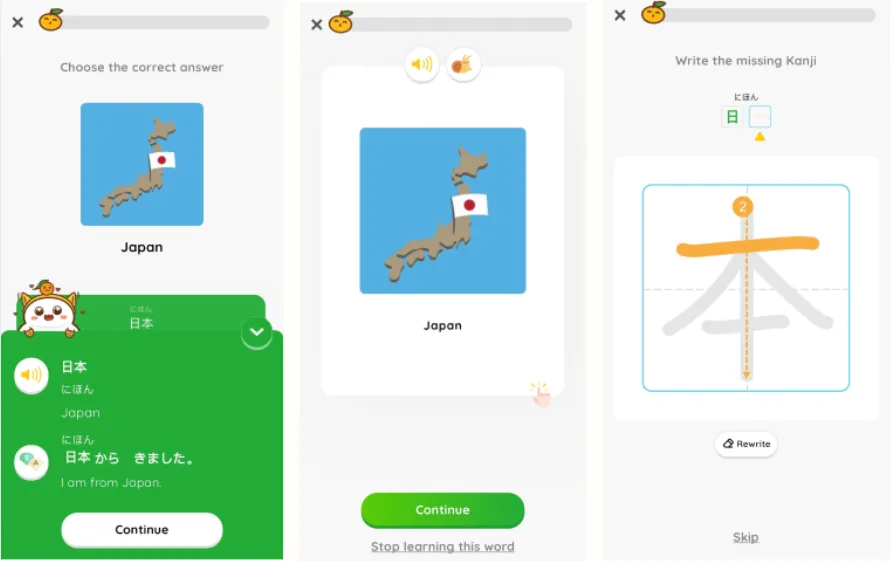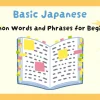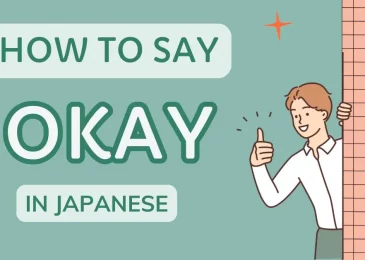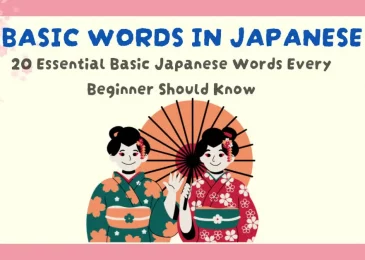Learning Japanese for beginners can be both challenging and exciting. Whether you’re planning to travel to Japan, connect with native speakers, or explore Japanese culture, mastering the language will open up a world of opportunities. However, to succeed, it’s essential to take a structured approach. This guide will walk you through the essential steps on how to learn Japanese for beginners effectively.
Set Realistic Expectations
Before diving in, it’s important to understand that learning Japanese is a gradual process. It’s not something you’ll master overnight, and that’s perfectly okay. The Japanese language can be tricky, especially with its complex writing system that includes kanji, hiragana, and katakana.
The key to success is consistency. Even if progress feels slow, regular practice will eventually pay off. So, don’t get discouraged—celebrate small wins along the way and keep at it.
Master the Basics of the Japanese Alphabet
To start learning Japanese for beginners, you need to familiarize yourself with the three alphabets used in the language
Hiragana: The Building Block of Japanese Writing
Hiragana is the first writing system you should learn as a beginner. There are 46 basic hiragana characters, and they represent different syllables. Each character corresponds to a specific sound in Japanese. It’s used for native Japanese words, basic grammar particles, and verb endings. Once you’ve mastered hiragana, you’ll be able to read almost any basic Japanese text, even without knowing kanji.
Katakana: For Foreign Words and Loanwords
Katakana is the second writing system to learn. Just like hiragana, katakana has 46 basic characters that represent syllables. It’s primarily used for foreign words that have been adopted into Japanese, as well as for onomatopoeia, names of plants and animals, and technical terms. Words like “coffee” (コーヒー) or “computer” (コンピュータ) are written in katakana.
Kanji: The Complex Writing System
Kanji is the third and most complex writing system in Japanese. Unlike hiragana and katakana, which are phonetic, kanji characters represent entire words or concepts. These characters originated from Chinese and can have multiple readings depending on the context. There are thousands of kanji, but you can get by with knowing just the 2000 most frequently used characters. Learning kanji can seem overwhelming at first, but it’s essential for reading more advanced texts in Japanese.
Learn Japanese Key Phrases and Vocabulary
When learning Japanese for beginners, building a solid foundation of vocabulary is essential for engaging in basic conversations and understanding the language. Start with common key phrases and practical vocabulary that you can use in everyday situations.
Key Phrases
For beginners, key phrases are vital as they allow you to immediately begin communicating. For instance, when you meet someone, the most common greeting during the day is “こんにちは” (Konnichiwa), meaning “Hello” or “Good afternoon.” This is a simple, versatile greeting that you can use in most situations.
If someone helps you, it’s important to express your gratitude with “ありがとう” (Arigatou), meaning “Thank you.” In more formal situations, you can say “ありがとうございます” (Arigatou gozaimasu) to show greater respect.
To ask someone how they are, you can use the phrase “お元気ですか。” (Ogenki desu ka?), which translates to “How are you?” A standard response could be “元気です” (Genki desu), meaning “I’m fine.” If you’re feeling less than great, you can say “元気じゃないです” (Genki ja nai desu), which means “I’m not feeling well.”
Other essential phrases include “すみません” (Sumimasen) which can be used for apologizing or getting someone’s attention (like saying “Excuse me” in English), and “お願いします” (Onegaishimasu), which means “Please” and is often used when making requests.
Vocabulary
Once you are comfortable with basic phrases, expanding your vocabulary will allow you to communicate more freely. Focus on words that are used frequently in daily life, such as common nouns and verbs. For example, words related to food like “食べ物” (Tabemono – food), “水” (Mizu – water), and “ご飯” (Gohan – rice/meal) are essential in day-to-day conversations.
Additionally, knowing words for places is crucial when you want to navigate your surroundings. Words like “店” (Mise – shop) and “学校” (Gakkou – school) are useful when talking about locations or asking for directions.
When talking about family, you’ll often use words like “母” (Haha – mother), “父” (Chichi – father), “兄” (Ani – older brother), and “姉” (Ane – older sister). These terms are common in conversation and help you describe your family members.
Verbs are also a key part of any language. Common verbs like “食べる” (Taberu – to eat), “行く” (Iku – to go), “見る” (Miru – to see/look), and “する” (Suru – to do/make) are the foundation for constructing simple sentences and expressing actions.
Focus on Pronunciation and Listening
When learning Japanese for beginners, pronunciation and listening are essential skills that will significantly impact your ability to communicate effectively.
Japanese Pronunciation
Japanese pronunciation is relatively straightforward, but it’s important to focus on a few key areas:
- Vowel Sounds: The five vowels – “あ” (a), “い” (i), “う” (u), “え” (e), and “お” (o) – are consistent and should be practiced until clear.
- Consonants: The “r” sound in Japanese is softer, created by lightly tapping the tongue against the roof of the mouth.
- Pitch Accent: Pay attention to the rise and fall in pitch, as it can change the meaning of a word. For example, “はし” (hashi) with a low pitch means “chopsticks,” but with a high pitch, it means “bridge.” Understanding and practicing pitch is important for being understood correctly.
- Clear Articulation: In Japanese, it’s essential to articulate each syllable clearly. There are no silent letters like in English. For example, “すし” (sushi) is pronounced clearly as “su-shi,” without dropping the “u” sound.
Japanese Listening
To improve your pronunciation and overall fluency in Japanese, listening practice is just as important as speaking.
- Podcasts: Listen to beginner-friendly podcasts to familiarize yourself with spoken Japanese.
- Anime: Watch anime to hear everyday expressions and casual speech. Start with subtitles and then try to watch without them.
- Japanese Music: J-pop and traditional music are good for listening practice, as they often feature clear pronunciation and slower tempos.
- Movies and Dramas: Watching Japanese films helps you get used to natural speech and cultural nuances.
Introduction to Japanese Grammar
Japanese grammar can seem complex, but starting with simple sentence structures will make it more manageable.
Basic Sentence Structure
Japanese sentence structure typically follows a Subject-Object-Verb (SOV) pattern, which is different from the Subject-Verb-Object (SVO) structure common in English. In a basic Japanese sentence, the subject comes first, followed by the object, and then the verb.
For example: “私は日本語を勉強しています” (Watashi wa nihongo o benkyou shiteimasu) – “I am studying Japanese.”
- 私 (Watashi) = I (subject)
- 日本語 (nihongo) = Japanese (object)
- 勉強しています (benkyou shiteimasu) = am studying (verb)
The verb comes at the end of the sentence, which is a key characteristic of Japanese grammar.
Key Particles
Particles are small but vital words in Japanese that help indicate the grammatical role of other words in a sentence. Some important particles to know are:
- は (wa): Marks the topic of the sentence, often translated as “as for” or “regarding.” It is not pronounced like “ha” in this context but as “wa.”
- が (ga): Indicates the subject of the sentence, often used when introducing new information.
- を (wo): Marks the direct object of a verb.
- に (ni): Used to indicate the direction of action, a time marker, or the target of an action.
Use Technology and Language Apps
MochiKanji is a powerful language-learning app designed to help users master Japanese kanji and vocabulary efficiently. Here are some of its key features:
Spaced Repetition System (SRS)
MochiKanji uses SRS to optimize your learning. This method helps you review kanji and vocabulary at “Golden Time” – the best time to review and based on how well you remember them, which enhances long-term retention.
Kanji Learning
MochiKanji app is designed to teach kanji writing from N5 to N2 levels, offering a comprehensive learning experience. It features a variety of writing games that focus on stroke order, helping learners master kanji and retain them for the long term. Additionally, the app integrates kanji learning with vocabulary practice, making it easier for users to remember words in context while improving their writing skills.
Vocabulary Expansion
MochiKanji helps you learn vocabulary alongside kanji. It includes 8000 vocabulary words divided by topic and example sentences to show you how kanji are used in context, improving both reading and listening skills.
Audio Pronunciation
Each word and kanji comes with audio pronunciation by native speakers. This feature is essential for improving your listening and speaking abilities, ensuring you learn the correct pronunciation of words.
Progress Tracking
The app tracks your progress, showing how many kanji and words you’ve learned and how well you’ve mastered them with 5 levels of memorization. You can see your learning stats and focus on areas where you need more practice.
Practice Speaking and Writing
Language is about communication, so speaking and writing should be a priority, even for beginners. Don’t be afraid to make mistakes; this is part of the learning process.
Speaking
Find a language exchange partner: Regularly practice speaking with a native speaker or someone fluent in Japanese. Practice saying sentences, phrases, or even reading aloud to get used to the sounds and rhythm of Japanese. Participate in speaking groups or casual meetups to practice speaking in a relaxed environment.
Writing
Start by writing basic sentences to practice structure and vocabulary. Write a daily journal in Japanese, even if it’s just a few sentences. Share your writing with native speakers or language learners to get corrections and improve your skills.
Review and Stay Consistent
To make steady progress in learning Japanese for beginners, it’s important to regularly review what you’ve learned and stay consistent in your studies. Here’s how to do that effectively:
Set Goals
Short-term Goals
Break your learning into smaller, achievable tasks. For example, you can aim to learn 10 new kanji or master a specific grammar point within a week. This helps you feel accomplished and keeps you motivated.
Long-term Goals
Have bigger milestones in mind, such as passing a Japanese proficiency test or being able to hold a conversation for 10 minutes in Japanese. Long-term goals give you something to work toward and keep you focused.
Review Regularly
Set aside time each week to go over what you’ve learned. This could be reviewing kanji, vocabulary, or grammar points you’ve covered. Reviewing helps reinforce what you know and prevents forgetting.
Stay Consistent
Daily Practice
Consistency is key to language learning. Try to practice every day, even if it’s just for 15-30 minutes. The more regularly you study, the faster you’ll improve.
Create a Routine
Establish a study routine that fits your schedule. It can be helpful to dedicate specific times of the day for studying, whether in the morning, during lunch breaks, or before bed. By setting clear goals, tracking your progress, and maintaining a consistent study routine, you’ll make steady and noticeable progress in learning Japanese for beginners.
Conclusion
Learning Japanese for beginners is a manageable and rewarding endeavor when you approach it with dedication. Start with the basics, practice consistently, and immerse yourself in the language and culture. With time and effort, you’ll gain the skills you need to communicate effectively in Japanese. Keep a positive mindset, and remember: learning a language is not a race, but a journey.

